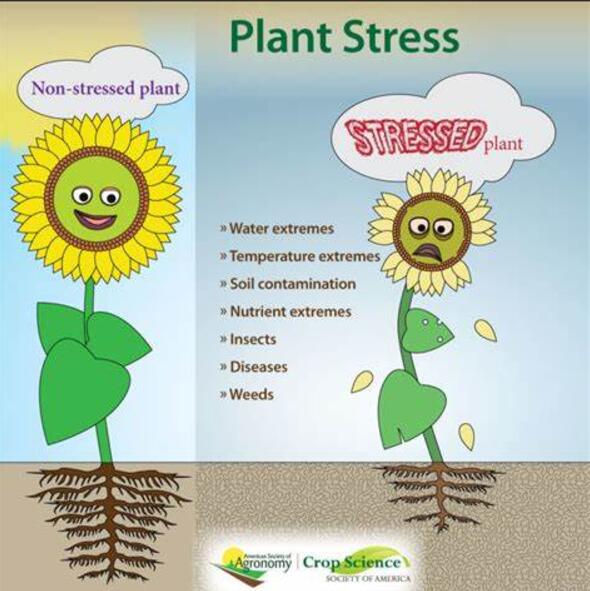Histochemical and gene expression changes in Cannabis sativa hypocotyls exposed to increasing concentrations of cadmium and zinc
IF 6.8
Q1 PLANT SCIENCES
引用次数: 0
Abstract
Hemp (Cannabis sativa L.) is a versatile crop that produces cellulosic bast fibres used in textiles and biocomposites. Is also finds use in phytoremediation, being a good candidate for the cultivation on marginal lands, such as those contaminated by heavy metals (HMs). HMs like cadmium (Cd) and zinc (Zn) are known to affect plant growth and impair the biosynthesis of cellulose and lignin at the cell wall level. Since cellulose is the major component in the gelatinous layer of bast fibres, HMs can impact the structure of hemp fibres and, consequently, their mechanical properties. This study investigates how varying concentrations of Cd and Zn in the soil affect the bast fibres of hemp plantlets. The chosen model is the hypocotyl, as it is ideal for studying bast fibre development: it exhibits a temporal separation between the elongation and thickening phases within a short period of approximately three weeks. C. sativa plantlets were grown for 20 days, and the hypocotyls sampled to perform histochemical observations, gene expression analysis, as well as to quantify biomass yield and Cd/Zn accumulation. Hemp plantlets grown in soils with the three highest Zn concentrations were smaller than the control group, whereas no decrease in size was observed under elevated Cd concentrations. However, at the highest Cd concentration, the root system exhibited enhanced development, accompanied by a significant increase in dry weight across all the concentrations tested. The quantification of Cd and Zn showed that the roots were the main organs accumulating HMs. Cd at the two highest concentrations decreased significantly the lumen area of bast fibres and increased their cell wall thickness. Zn decreased significantly the lumen area, but it did not impact the thickness of the cell wall at the highest concentration. Cd also increased the number of secondary fibres. Immunohistochemistry highlighted a different pattern of crystalline cellulose distribution with a signal that was less homogeneous in the presence of Cd and Zn. Gene expression analysis revealed changes in transcripts encoding cellulose synthases, fasciclin-like arabinogalactan proteins, class III peroxidases. The results obtained shed light on the molecular response and bast fibre histological changes occurring in young hemp plants exposed to Cd and Zn.
暴露于高浓度镉和锌的大麻下胚轴的组织化学和基因表达变化
大麻(Cannabis sativa L.)是一种用途广泛的作物,可生产纤维素韧皮纤维,用于纺织品和生物复合材料。大麻还可用于植物修复,是边缘土地(如受重金属(HMs)污染的土地)的理想种植作物。众所周知,镉(Cd)和锌(Zn)等重金属会影响植物生长,损害细胞壁层面纤维素和木质素的生物合成。由于纤维素是韧皮纤维胶质层的主要成分,因此 HMs 会影响麻纤维的结构,进而影响其机械性能。本研究调查了土壤中不同浓度的镉和锌如何影响大麻幼苗的韧皮纤维。所选择的模型是下胚轴,因为它是研究韧皮纤维发育的理想模型:在大约三周的短时间内,下胚轴的伸长阶段和增粗阶段在时间上是分离的。大麻小植株生长了 20 天,对其下胚轴进行取样,以进行组织化学观察、基因表达分析,并对生物量产量和镉/锌积累进行量化。在锌浓度最高的三种土壤中生长的小麻比对照组小,而在镉浓度较高的土壤中生长的小麻体积没有减小。不过,在镉浓度最高的土壤中,根系发育加快,干重在所有测试浓度下都显著增加。镉和锌的定量分析表明,根系是积累 HMs 的主要器官。两种最高浓度的镉能显著减少韧皮纤维的管腔面积,增加其细胞壁厚度。锌会明显减少韧皮纤维的管腔面积,但在最高浓度下不会影响细胞壁的厚度。镉也增加了次生纤维的数量。免疫组化突出显示了结晶纤维素的不同分布模式,在镉和锌的作用下,信号的均匀性降低。基因表达分析表明,纤维素合成酶、类筋膜阿拉伯半乳聚糖蛋白、III 类过氧化物酶的编码转录本发生了变化。研究结果揭示了暴露于镉和锌的大麻幼苗的分子反应和韧皮部纤维组织学变化。
本文章由计算机程序翻译,如有差异,请以英文原文为准。
求助全文
约1分钟内获得全文
求助全文
来源期刊

Plant Stress
PLANT SCIENCES-
CiteScore
5.20
自引率
8.00%
发文量
76
审稿时长
63 days
期刊介绍:
The journal Plant Stress deals with plant (or other photoautotrophs, such as algae, cyanobacteria and lichens) responses to abiotic and biotic stress factors that can result in limited growth and productivity. Such responses can be analyzed and described at a physiological, biochemical and molecular level. Experimental approaches/technologies aiming to improve growth and productivity with a potential for downstream validation under stress conditions will also be considered. Both fundamental and applied research manuscripts are welcome, provided that clear mechanistic hypotheses are made and descriptive approaches are avoided. In addition, high-quality review articles will also be considered, provided they follow a critical approach and stimulate thought for future research avenues.
Plant Stress welcomes high-quality manuscripts related (but not limited) to interactions between plants and:
Lack of water (drought) and excess (flooding),
Salinity stress,
Elevated temperature and/or low temperature (chilling and freezing),
Hypoxia and/or anoxia,
Mineral nutrient excess and/or deficiency,
Heavy metals and/or metalloids,
Plant priming (chemical, biological, physiological, nanomaterial, biostimulant) approaches for improved stress protection,
Viral, phytoplasma, bacterial and fungal plant-pathogen interactions.
The journal welcomes basic and applied research articles, as well as review articles and short communications. All submitted manuscripts will be subject to a thorough peer-reviewing process.
 求助内容:
求助内容: 应助结果提醒方式:
应助结果提醒方式:


